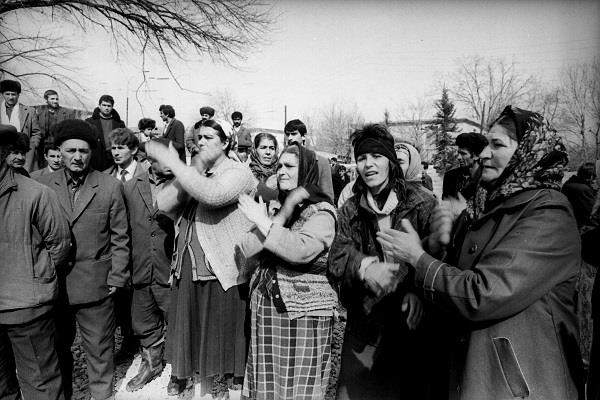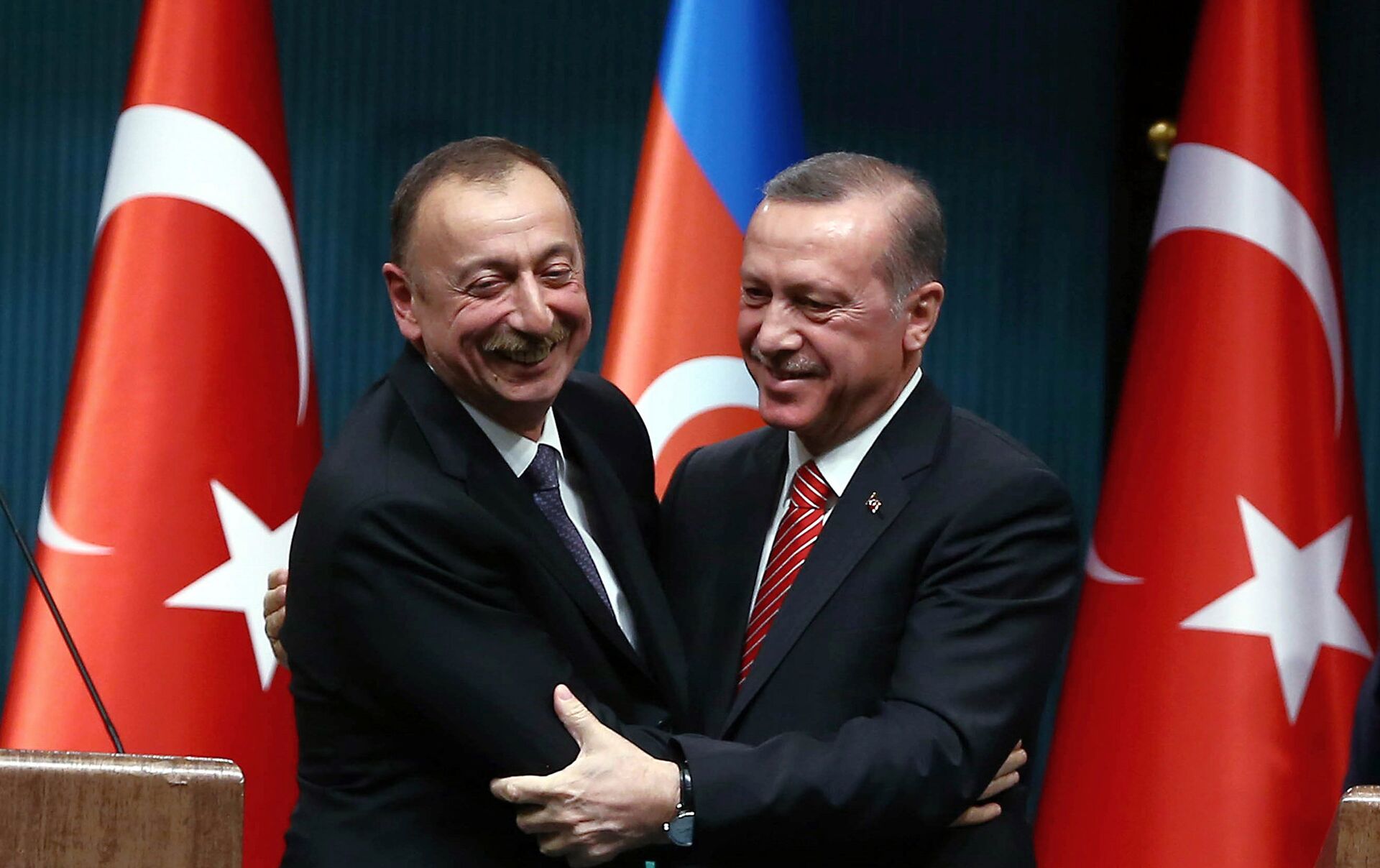Khojaly – how it happened
February 26 is the day Azerbaijan commemorates those who perished in the Khojali tragedy, one of the goriest episodes of the Karabakh War in the early 1990s.
One chapter in Black Garden, a book by British journalist Thomas de Waal, analyzes witness accounts, court conclusions and experts’ opinions on what happened in Khojaly.
Thomas de Waal, ‘Black Garden’
“Starting from January 1 of 1992, the Armenians began to conduct reconnaissance missions outside of the Karabakh capital, Stepanakert. Subsequently, they captured the Azerbaijani villages that surrounded the capital, expelling hundreds of Azerbaijanis who lived there. Their main target was Khojali, located five miles northeast of Stepanakert and the region’s only airport.
Khojali had been the focus of a large Azerbaijani resettlement program. In 1991, it had a population of 6,300. In October 1991, the Armenians blocked the road connecting Khojali and Aghdam, so that the only way to reach the town was by helicopter: a quick flight from Aghdam followed by a rapid corkscrew descent.
In January, when the American reporter Thomas Goltz went on this terrifying trip, he found the town to be cold and poorly defended.
“There were no working telephones in Khojali, nothing was working —no electricity, no heating, and no running water”, Goltz wrote. “The only link connecting the town to the outside world was the helicopter, and it was under huge risk with each trip it made”.
By the time the last helicopter flew into Khojali on 13 February 1992, fewer than 300 people had been evacuated by air and about 3,000 people remained in the town. Khojali was only defended by the OMON commander, Alif Hajiev, and approximately 160 lightly armed men who were then based at the airport. Khojali citizens were anxiously waiting for the expected Armenian attack.
The Armenian assault began on the night of 25–26 February, a date that was probably chosen to mark the anniversary of the Sumgait pogroms which occurred four years earlier. Armored vehicles from the Soviet 366th Regiment lent their support to the Armenian troops. They surrounded Khojali on three sides before Armenian fighters went in and overwhelmed the local defenders. Only one exit out of Khojali remained open. Hajiev reportedly told the civilians to escape and run to Aghdam, and that his OMON military men would accompany them for their protection.

In the middle of the night, a large crowd fled through the woods, which were ankle-deep in snow, and started to descend the valley of the small Gargar river. In the early morning, a crowd of Khojali civilians, as well as a few of the OMON personnel, reached open ground near the Armenian village of Nakhichevanik.
There they were hit by a wall of gunfire from Armenian fighters on the hillside above. The militiamen returned fire but were heavily outnumbered and killed. More fleeing civilians kept coming onto a scene of appalling carnage.
A Khojali resident, Hijran Alekpera, told Human Rights Watch: “By the time we got to Nakhichevanik it was 9:00 a.m. There was a field and there were many people who had been killed. There were maybe a hundred. I didn’t try to count. I was wounded on this field. Aliv Gajiev was shot and I wanted to help him. A bullet hit me in the belly. I could see where they were shooting from. I saw other bodies in the field. They were newly killed — they hadn’t changed color”.
A few days later, the gruesome aftermath of the massacre greeted the reporters and investigators who arrived at the hillsides. Torn bodies littered the snowy ground. Anatol Lieven of The Times noted that “several of them, including one small girl, had terrible injuries: only her face was left”. The Azerbaijani prosecutor Yusif Agayev saw powder around the gunshot wounds and concluded that many of the victims had been shot at point-blank range: “They were shot at close range. We went to the place where it happened. It was obvious to me as a specialist”.
As well as those shot down, dozens of victims died of cold and frostbite in the woods. More than a thousand Khojali residents were taken hostage, among them several dozen of Meskhetian Turks, refugees from Central Asia. There are varying estimates of how many Azerbaijanis were killed in or near Khojali. The most reliable figure is probably that of the official Azerbaijani parliamentary investigation, which put the death toll at 485. Even taking into account that this number includes combatants and those who died of cold, it still larger than the body count of the entire Nagorno-Karabakh war.
The number of Azerbaijanis who returned fire was small and it could not excuse the clear targeting of hundreds of civilians, including children, in an open space and the shooting of defenseless people on the ground.

Slowly the news got out that a massacre had taken place at Khojali. At first, the outside world was reluctant to believe it because most international media coverage of the conflict would usually portray the Armenians as the main victims, rather than aggressors. A justificatory newspaper interview given in April 1992 by the former Azerbaijani President Ayaz Mutalibov did not help. Mutalibov, seeking to minimize his own role in the failure to defend the town, put the blame for the massacre on the Popular Front. His interview was much quoted in Armenia.
Today Armenians do admit that many Azerbaijani civilians were killed as they fled Khojali. Some blame irregular Armenian fighters, acting on their own behalf. An Armenian police officer, Major Valery Babayan, suggested revenge as a motive. He told the American reporter Paul Quinn-Judge that many of the fighters who had taken part in the Khojali attack “originally came from Sumgait and places like that”.
When asked about the taking of Khojali, the Armenian military leader Serzh Sarkisian carefully responded: “We don’t speak loudly about these things”. As for the casualties, Sarkisian said that their number was exaggerated and the fleeing Azerbaijanis had put up armed resistance. Sarkisian’s summation of what had happened, however, was more honest and more brutal: ‘But I think the main point is something different. Before Khojali, the Azerbaijanis were toying with us, they thought that the Armenians were people who could not raise their hand against the civilian population.
We were able to break that [stereotype], and that’s what happened. We should also remember that amongst those boys [forces] were people who had fled from Baku and Sumgait”.
Sarkisian’s account sheds a different light on the worst massacre of the Karabakh war, suggesting that the killings may, at least in part, have been a deliberate act of mass killing to intimidate the enemy.”


















